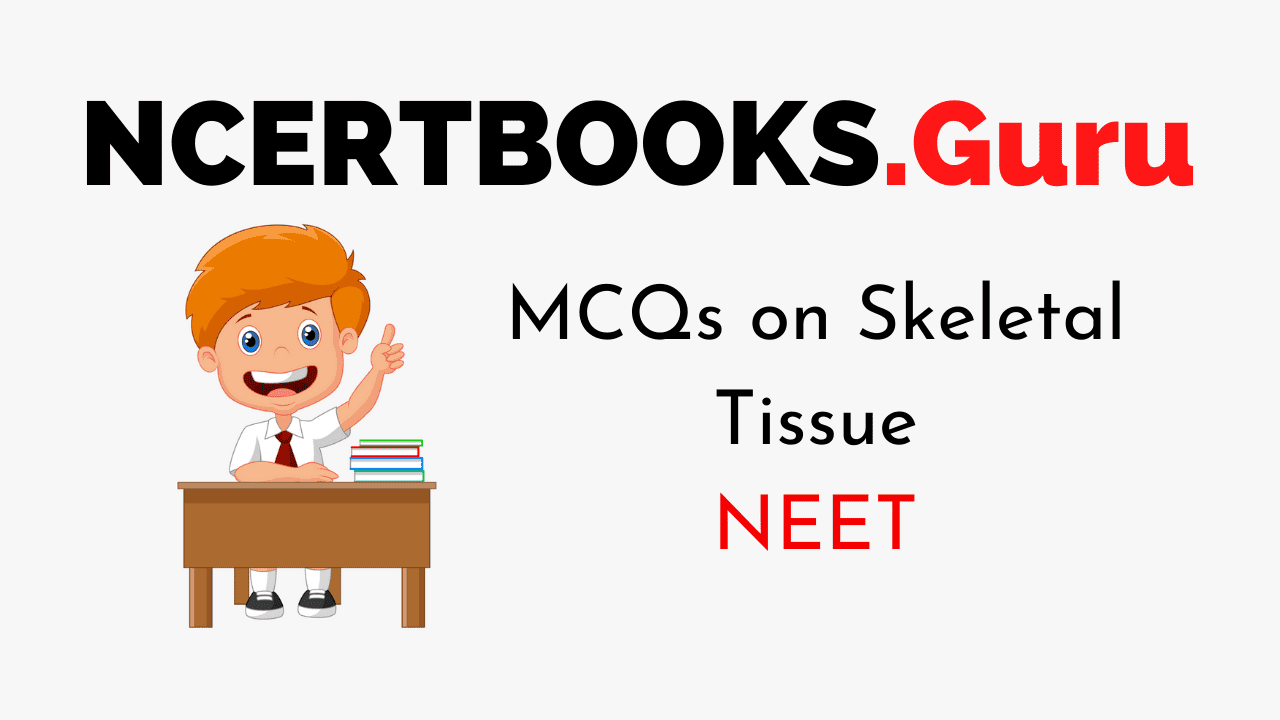NEET Biology is the scoring paper in the medical entrance examination. Here, you will discover the NEET Biology MCQ Questions for all Concepts as per the latest syllabus. Practice more on a regular basis with these NEET Biology objective questions on air pollution and improve your subject knowledge & problem-solving skills along with time management. NEET Biology Skeletal Tissue Multiple Choice Questions make you feel confident in answering the question in the exam & increases your scores to high.
MCQs on Skeletal Tissue
1. Tendons and ligaments are
(a) muscular tissue
(b) connective tissue
(c) skeletal tissue
(d) fibrous connective tissue
Answer
Answer: (d)
2. Skeletal muscle bundles are held together by a common connective tissue layer known as
(a) Fascia
(b) Perimysium
(c) Aponeurosis
(d) endomysium
Answer
Answer: (a)
3. Composition of bone marrow is
(a) adipose and areolar tissue
(b) adipose, areolar tissue and blood
(c) adipose tissue
(d) adipose tissue and fibroblasts
Answer
Answer: (b)
4. The formation of erythrocytes in foetus takes place in
(a) red bone marrow
(b) sarcoplasm
(c) liver and spleen
(d) blood
Answer
Answer: (c)
5. Nasal septum gets damaged. Its recovery requires cartilage known as
(a) elastic cartilage
(b) fibrous cartilage
(c) calcified cartilage
(d) hyaline cartilage
Answer
Answer: (d)
6. Membrane that surrounds the bone is known as
(a) pericardium
(b) periosteum
(c) perichondrium
(d) endosteum
Answer
Answer: (b)
7. Mammalian pinna is supported by
(a) elastic cartilage
(b) hyaline cartilage
(c) white fibrous connective tissue
(d) calcified cartilage
Answer
Answer: (a)
8. Hyaline cartilage does not have
(a) blood capillaries
(b) cells
(c) lacunae
(d) fibers
Answer
Answer: (d)
9. Major inorganic components of vertebrate bone is
(a) potassium hydroxide
(b) calcium phosphate
(c) calcium carbonate
(d) none of the above
Answer
Answer: (b)
10. Haversian canals occur in
(a) humerus
(b) scapula
(c) pubis
(d) clavicle
Answer
Answer: (a)
